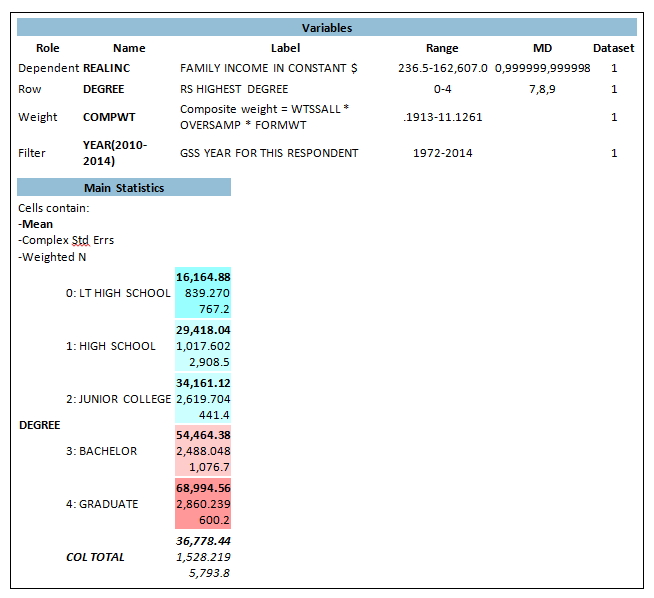Which of the following best describes the relationship between REALINC and DEGREE, based on Figure 8.2?
A team of researchers is interested to know whether respondents’ education is related to their personal income. They conduct a comparison of means with the variable REALINC (Respondent’s personal annual income, measured in dollars) as the dependent variable and DEGREE as the “Row” variable, and use a filter of YEAR (2010-2014). The resulting analysis is shown in Figure 8.2
Figure 8.2

a. There is a negative relationship between REALINC and DEGREE.
b. There is a positive relationship between REALINC and DEGREE.
c. There is no clear relationship between REALINC and DEGREE.
b. There is a positive relationship between REALINC and DEGREE.
You might also like to view...
Within developed countries
A) Rates of overweight are similar across social class B) The rich, who can afford more food, are more likely to be overweight than the poor C) The poor are more likely than the rich to be overweight D) The most overweight group is the middle class
As life-course trajectories became more standardized, what was the typical life course sequence experienced by a majority of the men in the twentieth century?
A. complete high school, complete college, marriage, parenthood B. first job, marriage, military service, parenthood C. complete high school, entry into first job, marriage, parenthood D. complete high school, marriage, parenthood, divorce
Sociologists use the term instrumental needs to refer to the _____ of a person.
A. emotional and intimate needs, such as the need for emotional closeness, B. sociobiological needs, such as the need to reproduce, C. task-oriented needs, such as the need to complete a work project, D. formative needs, such as those related to personality development,
Research on the influence of television has found that
A. both boys and girls rate aggressive toys seen in commercials as desirable. B. viewing stereotypical images of women has no impact on attitudes toward traditional roles. C. there is a positive link between viewing more sexist images and holding stronger feminist attitudes. D. watching television results in a rejection of popular culture stereotypes of both men and women.